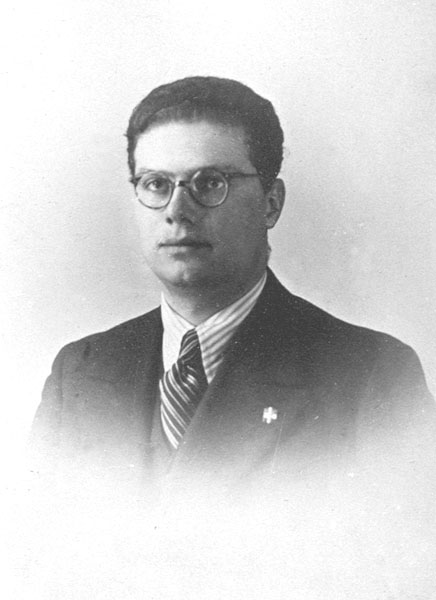|
Racah Parameter
The Racah parameters are a set of parameters used in atomic and molecular spectroscopy to describe the amount of total electrostatic repulsion in an atom that has multiple electrons. When an atom has more than one electron, there will be some electrostatic repulsion between the electrons. The amount of repulsion varies from atom to atom, depending upon the number of electrons, their spin, and the orbitals that they occupy. The total repulsion can be expressed in terms of three parameters ''A'', ''B'' and ''C'' which are known as the ''Racah parameters'' after Giulio Racah, who first described them. They are generally obtained empirically from gas-phase spectroscopic studies of atoms. They are often used in transition-metal chemistry to describe the repulsion energy associated with an electronic term. For example, the interelectronic repulsion of a 3P term is ''A'' + 7''B'', and of a 3F term is ''A'' - 8''B'', and the difference between them is therefore 15''B''. Definition The ... [...More Info...] [...Related Items...] OR: [Wikipedia] [Google] [Baidu] |
Spectroscopy
Spectroscopy is the field of study that measures and interprets electromagnetic spectra. In narrower contexts, spectroscopy is the precise study of color as generalized from visible light to all bands of the electromagnetic spectrum. Spectroscopy, primarily in the electromagnetic spectrum, is a fundamental exploratory tool in the fields of astronomy, chemistry, materials science, and physics, allowing the composition, physical structure and electronic structure of matter to be investigated at the atomic, molecular and macro scale, and over astronomical distances. Historically, spectroscopy originated as the study of the wavelength dependence of the absorption by gas phase matter of visible light dispersed by a prism. Current applications of spectroscopy include biomedical spectroscopy in the areas of tissue analysis and medical imaging. Matter waves and acoustic waves can also be considered forms of radiative energy, and recently gravitational waves have been associa ... [...More Info...] [...Related Items...] OR: [Wikipedia] [Google] [Baidu] |
Electrostatic
Electrostatics is a branch of physics that studies slow-moving or stationary electric charges. Since classical times, it has been known that some materials, such as amber, attract lightweight particles after rubbing. The Greek word (), meaning 'amber', was thus the root of the word ''electricity''. Electrostatic phenomena arise from the forces that electric charges exert on each other. Such forces are described by Coulomb's law. There are many examples of electrostatic phenomena, from those as simple as the attraction of plastic wrap to one's hand after it is removed from a package, to the apparently spontaneous explosion of grain silos, the damage of electronic components during manufacturing, and photocopier and laser printer operation. The electrostatic model accurately predicts electrical phenomena in "classical" cases where the velocities are low and the system is macroscopic so no quantum effects are involved. It also plays a role in quantum mechanics, where addition ... [...More Info...] [...Related Items...] OR: [Wikipedia] [Google] [Baidu] |
Atom
Atoms are the basic particles of the chemical elements. An atom consists of a atomic nucleus, nucleus of protons and generally neutrons, surrounded by an electromagnetically bound swarm of electrons. The chemical elements are distinguished from each other by the number of protons that are in their atoms. For example, any atom that contains 11 protons is sodium, and any atom that contains 29 protons is copper. Atoms with the same number of protons but a different number of neutrons are called isotopes of the same element. Atoms are extremely small, typically around 100 picometers across. A human hair is about a million carbon atoms wide. Atoms are smaller than the shortest wavelength of visible light, which means humans cannot see atoms with conventional microscopes. They are so small that accurately predicting their behavior using classical physics is not possible due to quantum mechanics, quantum effects. More than 99.94% of an atom's mass is in the nucleus. Protons hav ... [...More Info...] [...Related Items...] OR: [Wikipedia] [Google] [Baidu] |
Electron
The electron (, or in nuclear reactions) is a subatomic particle with a negative one elementary charge, elementary electric charge. It is a fundamental particle that comprises the ordinary matter that makes up the universe, along with up quark, up and down quark, down quarks. Electrons are extremely lightweight particles that orbit the positively charged atomic nucleus, nucleus of atoms. Their negative charge is balanced by the positive charge of protons in the nucleus, giving atoms their overall electric charge#Charge neutrality, neutral charge. Ordinary matter is composed of atoms, each consisting of a positively charged nucleus surrounded by a number of orbiting electrons equal to the number of protons. The configuration and energy levels of these orbiting electrons determine the chemical properties of an atom. Electrons are bound to the nucleus to different degrees. The outermost or valence electron, valence electrons are the least tightly bound and are responsible for th ... [...More Info...] [...Related Items...] OR: [Wikipedia] [Google] [Baidu] |
Spin (physics)
Spin is an Intrinsic and extrinsic properties, intrinsic form of angular momentum carried by elementary particles, and thus by List of particles#Composite particles, composite particles such as hadrons, atomic nucleus, atomic nuclei, and atoms. Spin is quantized, and accurate models for the interaction with spin require relativistic quantum mechanics or quantum field theory. The existence of electron spin angular momentum is inferred from experiments, such as the Stern–Gerlach experiment, in which silver atoms were observed to possess two possible discrete angular momenta despite having no orbital angular momentum. The relativistic spin–statistics theorem connects electron spin quantization to the Pauli exclusion principle: observations of exclusion imply half-integer spin, and observations of half-integer spin imply exclusion. Spin is described mathematically as a vector for some particles such as photons, and as a spinor or bispinor for other particles such as electrons. Sp ... [...More Info...] [...Related Items...] OR: [Wikipedia] [Google] [Baidu] |
Atomic Orbital
In quantum mechanics, an atomic orbital () is a Function (mathematics), function describing the location and Matter wave, wave-like behavior of an electron in an atom. This function describes an electron's Charge density, charge distribution around the Atomic nucleus, atom's nucleus, and can be used to calculate the probability of finding an electron in a specific region around the nucleus. Each orbital in an atom is characterized by a set of values of three quantum numbers , , and , which respectively correspond to electron's energy, its angular momentum, orbital angular momentum, and its orbital angular momentum projected along a chosen axis (magnetic quantum number). The orbitals with a well-defined magnetic quantum number are generally complex-valued. Real-valued orbitals can be formed as linear combinations of and orbitals, and are often labeled using associated Spherical harmonics#Harmonic polynomial representation, harmonic polynomials (e.g., ''xy'', ) which describe ... [...More Info...] [...Related Items...] OR: [Wikipedia] [Google] [Baidu] |
Giulio Racah
Giulio (Yoel) Racah (; February 9, 1909 – August 28, 1965) was an Italian–Israeli physicist and mathematician. He was Acting President of the Hebrew University of Jerusalem from 1961 to 1962. The crater Racah on the Moon is named after him. Biography Giulio (Yoel) Racah was born in Florence, Italy. On his mother's side, Racah's family claimed to trace its ancestry in Italy back to the destruction of the Second Temple. He earned his Doctorate from the University of Florence in 1930, and continued his studies at Rome with Enrico Fermi. In 1939, due to application of Anti-Jewish laws in Italy, Racah emigrated to the British Mandate of Palestine. In the 1948 Arab–Israeli War, Racah served as deputy commander of the Israeli forces defending Mount Scopus. Racah died at the age of 56, apparently asphyxiated by gas from a faulty heater while visiting Florence. Academic and scientific career In 1937 Racah was appointed Professor of Physics at the University of Pisa. I ... [...More Info...] [...Related Items...] OR: [Wikipedia] [Google] [Baidu] |
Term Symbol
In atomic physics, a term symbol is an abbreviated description of the total spin and orbital angular momentum quantum numbers of the electrons in a multi-electron atom. So while the word ''symbol'' suggests otherwise, it represents an actual ''value'' of a physical quantity. For a given electron configuration of an atom, its state depends also on its total angular momentum, including spin and orbital components, which are specified by the term symbol. The usual atomic term symbols assume angular momentum coupling#LS coupling, LS coupling (also known as Russell–Saunders coupling) in which the all-electron total quantum numbers for orbital (''L''), spin (''S'') and total (''J'') angular momenta are good quantum numbers. In the terminology of atomic spectroscopy, ''L'' and ''S'' together specify a term; ''L'', ''S'', and ''J'' specify a level; and ''L'', ''S'', ''J'' and the magnetic quantum number ''M''''J'' specify a state. The conventional term symbol has the form 2''S''+1''L'' ... [...More Info...] [...Related Items...] OR: [Wikipedia] [Google] [Baidu] |
Slater Integrals
In mathematics and mathematical physics, Slater integrals are certain integrals of products of three spherical harmonics. They occur naturally when applying an orthonormal basis of functions on the unit sphere that transform in a particular way under rotations in three dimensions. Such integrals are particularly useful when computing properties of atoms which have natural spherical symmetry. These integrals are defined below along with some of their mathematical properties. Formulation In connection with the quantum theory of atomic structure, John C. Slater defined the integral of three spherical harmonics as a coefficient c.John C. Slater, Quantum Theory of Atomic Structure, McGraw-Hill (New York, 1960), Volume I These coefficients are essentially the product of two Wigner 3jm symbols. :c^k(\ell,m,\ell',m')=\int d^2\Omega \ Y_\ell^m(\Omega)^* Y_^(\Omega) Y_k^(\Omega) These integrals are useful and necessary when doing atomic calculations of the Hartree–Fock variety where m ... [...More Info...] [...Related Items...] OR: [Wikipedia] [Google] [Baidu] |
Atomic Orbital
In quantum mechanics, an atomic orbital () is a Function (mathematics), function describing the location and Matter wave, wave-like behavior of an electron in an atom. This function describes an electron's Charge density, charge distribution around the Atomic nucleus, atom's nucleus, and can be used to calculate the probability of finding an electron in a specific region around the nucleus. Each orbital in an atom is characterized by a set of values of three quantum numbers , , and , which respectively correspond to electron's energy, its angular momentum, orbital angular momentum, and its orbital angular momentum projected along a chosen axis (magnetic quantum number). The orbitals with a well-defined magnetic quantum number are generally complex-valued. Real-valued orbitals can be formed as linear combinations of and orbitals, and are often labeled using associated Spherical harmonics#Harmonic polynomial representation, harmonic polynomials (e.g., ''xy'', ) which describe ... [...More Info...] [...Related Items...] OR: [Wikipedia] [Google] [Baidu] |
Tanabe–Sugano Diagram
In coordination chemistry, Tanabe–Sugano diagrams are used to predict absorption (optics), absorptions in the ultraviolet (UV), Visible spectrum, visible and infrared (IR) electromagnetic spectrum of coordination compounds. The results from a Tanabe–Sugano diagram analysis of a metal complex can also be compared to experimental spectroscopic data. They are qualitatively useful and can be used to approximate the value of 10Dq, the ligand field theory, ligand field splitting energy. Tanabe–Sugano diagrams can be used for both high Spin chemistry, spin and low spin complexes, unlike Orgel diagrams, which apply only to high spin complexes. Tanabe–Sugano diagrams can also be used to predict the size of the ligand field necessary to cause high-spin to low-spin transitions. In a Tanabe–Sugano diagram, the ground state is used as a constant reference, in contrast to Orgel diagrams. The energy of the ground state is taken to be zero for all field strengths, and the energies of a ... [...More Info...] [...Related Items...] OR: [Wikipedia] [Google] [Baidu] |






